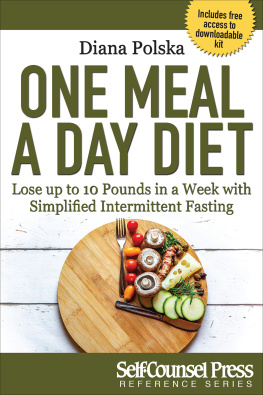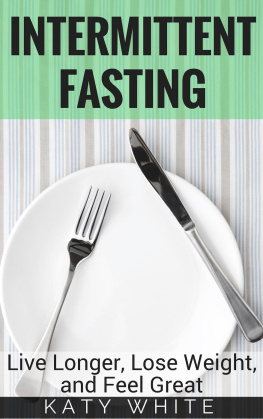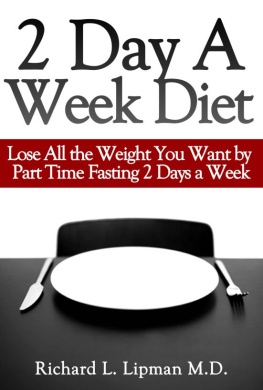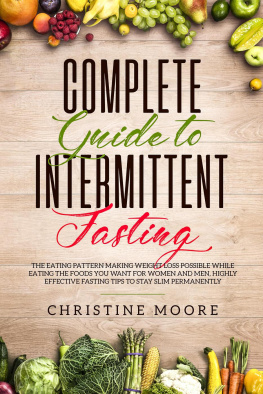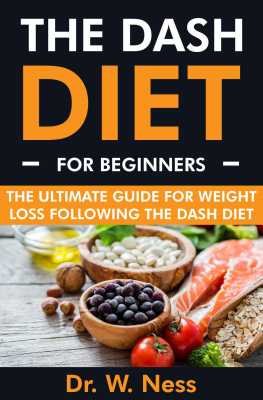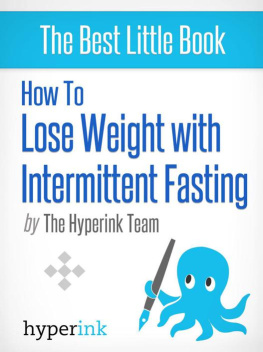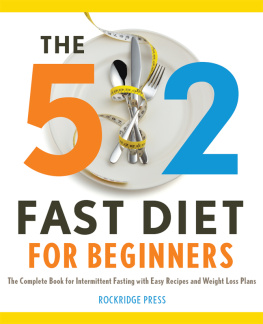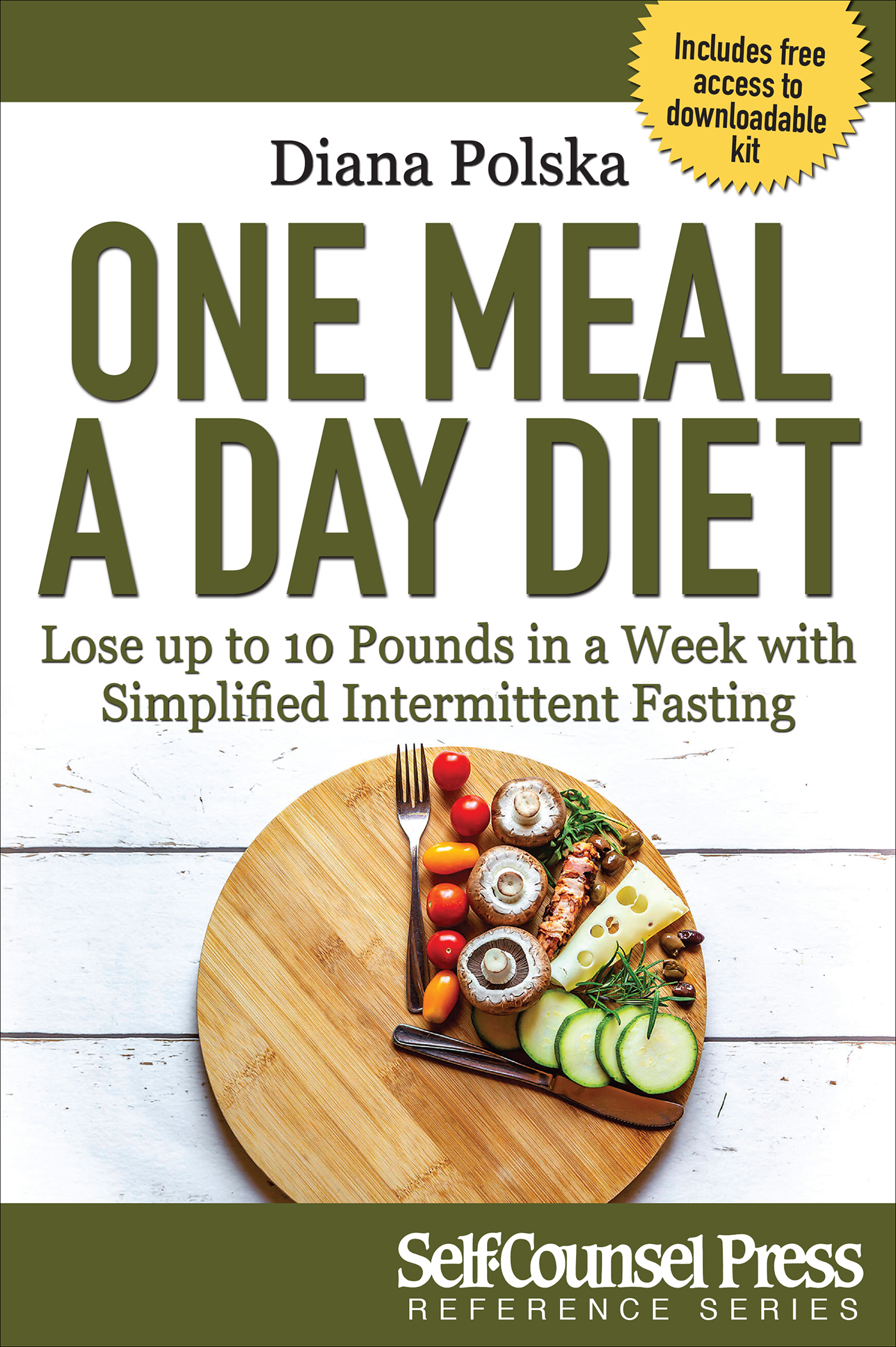PREFACE
One in three people worldwide is overweight.[1] It is not just a problem of the developed world. The number of overweight and obese adults in the developing world has almost quadrupled since 1980 to around 1 billion, says a report from the Overseas Development Institute.[2] Analysis from 188 countries reports that nearly 30% of the worlds population are either obese or overweight.[3]
The average person is no longer just overweight, but can now be classified as just shy of being obese, according to recent data and statistics from the Centers for Disease Control and Preventions National Center for Health Statistics.
The average (not pregnant) adult eats three meals or more per day, and drinks coffee and sugary drinks, and snacks numerous times per day.
If you wish to be above average slim and fit you must do what the average person doesnt do: eat less often and eat healthier.
The One Meal a Day (OMAD) Diet is a minimalist diet. Minimalism is a lifestyle that helps one become as efficient and productive as possible by removing any excess. Minimalism is essentially about keeping in your life only what serves you best. It simplifies everyday life.
Eating once per day is simple, easy, and minimal because you only need to think about what you will eat and drink at your one meal time versus doing this for numerous meal times and snacks.
I want to be clear that eating once a day doesnt mean starving. You can eat as much as you want in your one meal time.
Preparing and eating food is a time-consuming daily activity. The less often you eat during the day, the more time you will have on your hands to be productive in other ways. You will come to realize how much time and energy is wasted on planning meals, preparing food, eating out, and grocery shopping for all those meals you need to prepare.
Eating less often and the way of eating called intermittent fasting has been scientifically proven to be the most effective method of weight loss. It also has a plethora of health benefits and increases life span. I will cover all of this in the following chapters.
The key to intermittent fasting is to fast between meals (typically 1623 hours). During fasting, the body turns its fat stores into energy, a process called ketosis, which releases ketones into the bloodstream, encouraging weight loss.
There are many different ways of intermittent fasting such as alternate-day fasting, 5:2 diet, Warrior Diet, Eat-Stop-Eat diet, and meal skipping. A quick search online will help to explain the gist of each.
However, the best method, in my opinion after all my research and personal experience, is simply to eat just once a day when you are working toward your ideal weight. Once you have achieved your ideal weight you can switch over to eating twice a day to maintain your ideal weight permanently.
I eat twice per day. I like to call this maintenance mode. In my case, I eat twice per day for the sake of increased productivity, less time in the kitchen, better brain function, for good health, and to keep my metabolism sharp as I get older.
Once a week, I like to eat just once per day to get the health benefits of fasting. I know how powerful fasting is and how important it is to give the body a break from digestion. When the body isnt busy digesting food, it is regenerating and healing.
The main reason I wrote this book was because Im so tired of seeing people go on temporary diets and lose weight, then regain the weight and in many cases, gain back even more than they lost.
There are more than 700 scientific studies referenced in this book, but Ive condensed the research into one manageable plan. This book will be your comprehensive guide on how to use intermittent fasting properly. Should you wish to reference the endnotes, they are numbered throughout the chapters and included on the downloadable forms kit (the URL for accessing this is at the end of the book).
The biggest concern people have about eating less often and intermittent fasting is the hunger they may experience. This can be resolved by consuming the proper foods during meal times, and addressing hidden health factors.
Please note, intermittent fasting is not for children, pregnant women, and people with certain conditions, so please check with your doctor.
The book is split into two parts. Part I explains the OMAD Diet and the science behind intermittent fasting.
Part II helps resolve hidden issues that can impede your weight-loss efforts when trying to follow the OMAD Diet. For example, issues with your hunger hormones such as elevated ghrelin and leptin deficiency or leptin resistance make your brain think you are starving when that is not the case. Another example of a hidden factor is that in some cases, research has shown that women who have faced some sexual traumas[4] are more likely to be obese.
Part II also covers how to use exercise and supplements to lose weight even faster and how to be healthier and live longer. Therefore, you dont want to skip Part II.
Also, this book contains an exclusive downloadable kit of resources and recipes (and the endnotes for further reading) to help you as you embark on the road to weight loss and/or maintenance. Again, see the end of this book for access instructions.
I wish you well on your health and weight-loss journey.
INTRODUCTION
When he was younger, a man conducted an experiment. He was raising a pig for the state fair. He fed his pig at a specific time of the day, allowing the pig to eat as much as it wanted but only at a specific time, following a feeding schedule based on meal frequency and meal timing.
His friends fed their pigs the traditional way, letting the pigs have access to food all day and allowing them to eat whenever they wanted.
When it came time for judging, the mans pig had grown to be very strong, healthy, and LEAN, while his friends pigs had grown fat.
Pigs are not known for their lean figures; therefore, the man who had raised the lean pig, who himself was overweight, was convinced that he had found the secret to losing weight and keeping it off. He decided to use the exact method in which he fed his lean state fair pig. He ate as much as he wanted and ate whatever he wanted, but he ate at specific times during the day. He lost 42 pounds in two years and has kept it off for seven years and counting.
The mans very successful experiment is in line with the groundbreaking weight-loss research conducted recently on meal timing and frequency.
The OMAD (One Meal a Day) Diet is an easy way to get thin and stay thin forever (no more yo-yo weight battles). Its even possible to eat the things you enjoy eating (no more calorie counting).
The OMAD Diet is not a temporary weight-loss method or fad diet. Its a lifestyle plan that works for the long-term. This scientifically based, comprehensive lifestyle plan works simply because, unlike short-term weight-loss diets, an easy-to-follow, lifelong weight-management lifestyle can help you lose weight and keep it off permanently. In addition, it can dramatically improve your health, energy, and well-being.
The information in this book is based on recent groundbreaking scientific studies. I will also examine the lifestyles and eating habits that allow certain nationalities, such as the French, to eat fatty foods and desserts while remaining thin. (Adherence to the French Eating Model is inversely associated with overweight and obesity: results from a large sample of French adults published in

